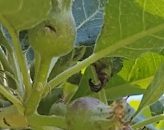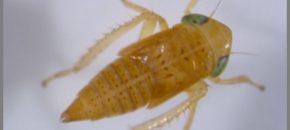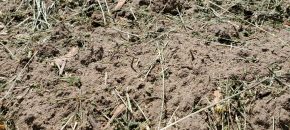
Peach: Oriental Fruit Moth: First generation timings are updated below. Growers that have utilized mating disruption for OFM can focus on PC; GPA; and catfacing insect pests as described below.
Continue reading...Rutgers Cooperative Extension

Peach: Oriental Fruit Moth: First generation timings are updated below. Growers that have utilized mating disruption for OFM can focus on PC; GPA; and catfacing insect pests as described below.
Continue reading...On May 12, NJ Governor Murphy signed Executive Order #241 eliminating the requirement for wearing masks in outdoor spaces taking effect immediately. Secretary of Agriculture Douglas Fisher has summarized the changes that may impact agriculture operations. The full text of his letter can be read in this attached file.
Continue reading...Spotted lanternfly nymphs are hatching throughout the state and first instars are present in multiple vineyards. Lanternfly overwinters in the egg stage and hatch is quite protracted, likely depending on the microhabitat where eggs are laid. In our surveys in 2019-2020, we identified a 2 year delay from the time SLF adults are first identified […]
Continue reading...Bagworms should begin hatching in the next 2-6 weeks throughout NJ, starting in the southern regions. Now is an optimal time to get this pest on your radar and prepare materials or approaches to attack first/second instar caterpillars. The control window for this pest is typically between 600-900 GDD50 (growing degree-days) and treatments should be in […]
Continue reading...
Blunt-nosed leafhoppers (BNLH) continue to be an increasing threat to cranberries in NJ. BNLH has one generation a year. It overwinters as eggs, which begin to hatch in early May. The nymphs (Picture 1) will go through five instars in about a month. The adults (Picture 2) begin to appear by the end of June […]
Continue reading...
May 17, 2021 Salem County. Surface soil conditions are quite dry across much of the acreage planted in the last two weeks. While their is adequate moisture in the rooting zone for corn and soybean germination, without a half inch to inch of precipitation or irrigation, soil residual herbicides applied to manage herbicide resistant weeds […]
Continue reading...
